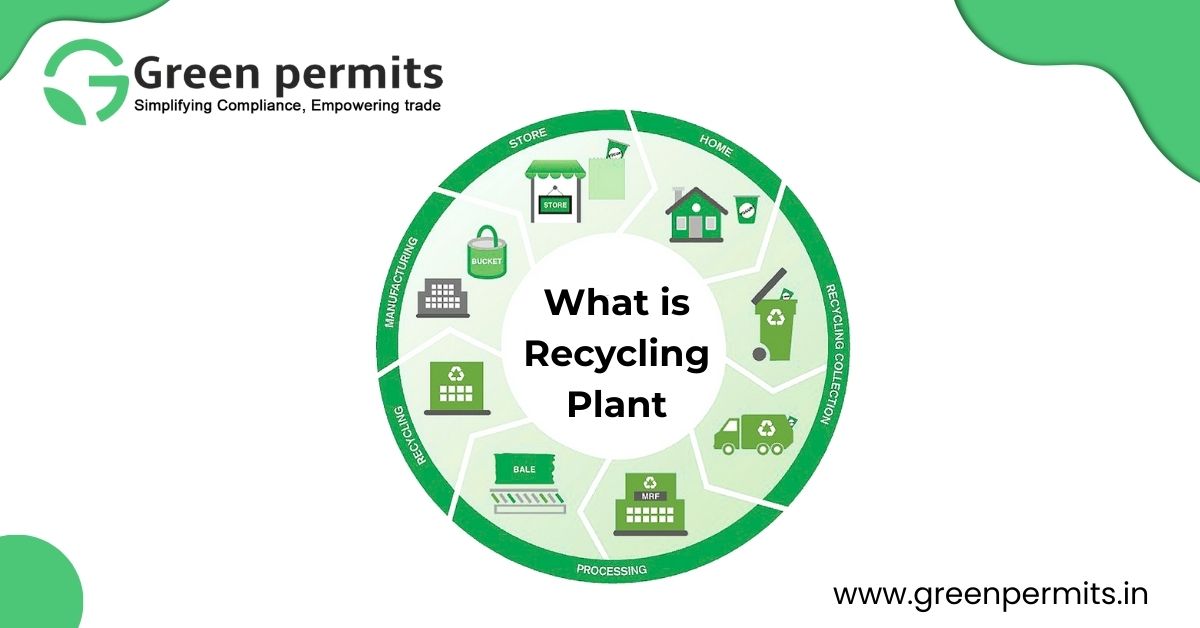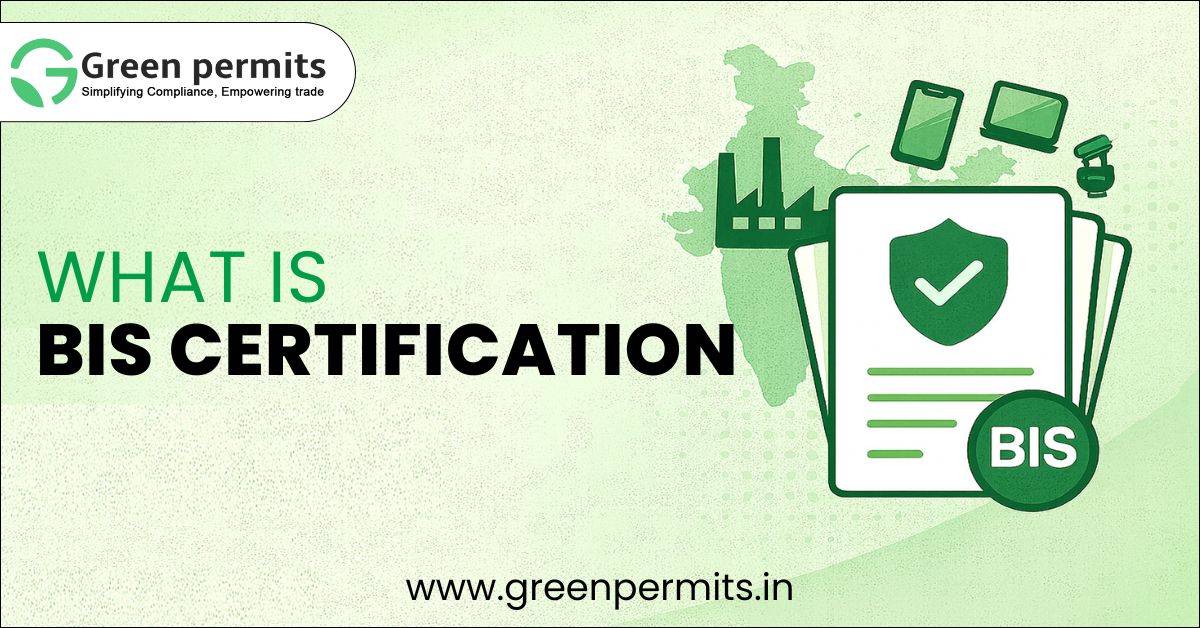On the outskirts of Delhi, a small factory hums with activity. Trucks unload heaps of discarded plastic bottles, which are cleaned, shredded, and transformed into pellets ready for reuse. What looked like waste a few hours ago is now raw material for textile yarn and packaging. This is the power of a recycling plant — a facility where waste finds new life and businesses find new opportunities.
For Indian manufacturers, importers, and entrepreneurs, understanding what a recycling plant is, how it works, and the compliance framework around it is critical. Beyond being an environmental necessity, recycling plants are becoming profitable ventures that also align with India’s strict waste management laws.
Recycling Plant Meaning and Relevance in India
A recycling plant is an industrial facility where waste materials are collected, sorted, processed, and converted into reusable raw materials or products. Instead of being dumped in landfills or burned in incinerators, waste is transformed into valuable resources.
In India, recycling plants are more than just factories. They are part of a compliance ecosystem regulated by the Central Pollution Control Board (CPCB), State Pollution Control Boards (SPCBs), and the Ministry of Environment, Forest and Climate Change (MoEFCC).
-
- India generates 62 million tons of solid waste annually (CPCB, 2023).
-
- Of this, 4.1 million tons is e-waste, making India the third-largest e-waste generator globally (UNEP, 2023).
-
- Plastic consumption is around 20 million tons/year, but only about 30% is recycled (FICCI, 2022).
With this backdrop, recycling plants are not only environmentally important but also commercially attractive.
How Does a Recycling Plant Work? (Step-by-Step)
Every recycling facility follows a systematic process, though the exact steps depend on the type of waste. A simplified workflow looks like this:
-
- Collection & Transportation – Waste materials (plastic, e-waste, tyres, batteries, etc.) are collected from households, businesses, or industries.
-
- Sorting – Waste is segregated by type, quality, and composition. For instance, plastics are sorted into PET, HDPE, LDPE, etc.
-
- Cleaning & Pre-processing – Contaminants (labels, liquids, chemicals) are removed. Some waste requires shredding or dismantling (e.g., e-waste).
-
- Processing – Waste is mechanically, chemically, or thermally treated to extract raw material (plastic flakes, metal ingots, battery chemicals).
-
- Manufacturing – The recovered materials are converted into usable products such as pellets, fibers, or secondary metals.
-
- Distribution – These recycled materials are sold to manufacturers, closing the loop in the circular economy.
Example: A PET bottle recycling plant in Gujarat processes used bottles into flakes → polyester fiber → yarn for the textile industry.
Types of Recycling Plants
Not all recycling plants are the same. India’s regulatory framework allows for specialized plants based on waste streams:
-
- Plastic Recycling Plants – Convert PET, HDPE, LDPE, and PP plastics into granules for packaging, textiles, and construction.
-
- E-Waste Recycling Plants – Extract valuable metals like gold, silver, copper, and rare earths from old electronics.
-
- Battery Recycling Plants – Handle lead-acid and lithium-ion batteries. Li-ion recycling is especially critical for India’s EV sector.
-
- Tyre & Rubber Recycling Plants – Convert old tyres into crumb rubber, pyrolysis oil, and other industrial products.
-
- Construction & Demolition (C&D) Waste Plants – Process concrete, bricks, and debris into aggregates for roads and buildings.
Profitability Snapshot:
-
- E-waste: recovery margins of 20–25%.
-
- Plastic: steady demand, margins 10–15%.
-
- Li-ion batteries: high initial cost but future growth driver for EVs.
Recycling Plant Examples in India
India has several successful recycling models already operating:
-
- Attero Recycling (Noida) – India’s leading e-waste and battery recycling company.
-
- NEPRA Resource Management (Ahmedabad) – Manages dry waste collection and recycling at scale.
-
- Gravita India (Jaipur) – Specializes in lead-acid and battery recycling, with international operations.
-
- Okhla Waste-to-Energy Plant (Delhi) – A government-backed facility converting municipal waste to power.
These examples show the variety of models, from private startups to large-scale PPP (public-private partnership) projects.
Importance & Benefits of Recycling Plants
Environmental Benefits
-
- Reduced landfills and marine pollution.
-
- Lower greenhouse gas emissions compared to incineration or virgin production.
-
- Conserves natural resources (metal ores, crude oil for plastics, etc.).
Economic Benefits
-
- Job creation in collection, processing, and manufacturing.
-
- Reduced dependence on imported raw materials.
-
- Profitable margins, especially in plastics, e-waste, and batteries.
Compliance & CSR Benefits
-
- Helps companies meet EPR (Extended Producer Responsibility) targets.
-
- Aligns with Plastic Waste Management Rules (2016, amended 2022) and E-Waste Management Rules (2022).
-
- Supports ESG (Environmental, Social, Governance) and CSR reporting.
In short, recycling plants offer triple bottom-line benefits: people, planet, and profit.
Recycling Plant Setup in India – Process & Cost
Setting up a recycling unit requires planning, licensing, and investment. Here’s a roadmap:
Steps to Start a Recycling Plant
-
- Feasibility Study – Assess market demand and raw material availability.
-
- Land & Infrastructure – Industrial land with adequate utilities.
-
- Detailed Project Report (DPR) – Covers cost, process, machinery, and compliance.
-
- Authorizations & Licenses – From CPCB/SPCB, Factory License, Fire NOC, etc.
-
- Equipment Procurement – Shredders, crushers, separators, furnaces, etc.
-
- Trial Production – Initial test runs.
-
- EPR Registration – If handling plastics, batteries, or e-waste.
-
- Commercial Operations – Begin supply of recycled products.
Costs
-
- Small plastic recycling unit – ₹10–50 lakh.
-
- Medium e-waste facility – ₹1–3 crore.
-
- Battery recycling (Li-ion) – ₹5–10 crore.
Costs vary depending on machinery, automation, and compliance requirements.
Rules, Guidelines, and Compliance Framework
Indian recycling plants must operate within a strong regulatory framework:
-
- Plastic Waste Management Rules, 2016 (amended 2022) – EPR targets for producers, importers, brand owners.
-
- E-Waste Management Rules, 2022 – Mandatory EPR registration for electronics manufacturers/importers.
-
- Hazardous and Other Wastes Rules, 2016 – Governs batteries, tyres, and hazardous waste.
-
- CPCB/SPCB Authorization – Essential license before operations.
-
- BIS Certification – Required for certain recycled products entering the market.
Without compliance, plants risk penalties, shutdowns, and loss of licenses.
Recycling Plant vs Waste Management Plant
-
- Recycling plants recover value (raw material, energy, metals).
-
- Waste management plants dispose or treat waste (landfills, composting, incineration).
Recycling vs Incineration
-
- Incineration: generates energy but creates emissions and ash.
-
- Recycling: retains material value, more sustainable long-term.
Which is Most Profitable?
-
- E-waste recycling – high value metals, strong margins.
-
- Plastic recycling – consistent demand.
-
- Li-ion recycling – future opportunity as EV adoption grows.
Business Opportunities & Profitability in Recycling
India’s recycling market is expanding rapidly:
-
- Indian waste management market size: $14B in 2023, projected 8% CAGR till 2030 (IMARC, 2024).
-
- Rising urbanization and consumption → more recyclable waste.
-
- EV push → new demand for battery recycling.
Best States for Recycling Business:
-
- Delhi-NCR, Maharashtra, Gujarat, Tamil Nadu (due to industrial hubs and waste availability).
For entrepreneurs, this means sustained demand and government support.
How to Start a Recycling Plant in India (Checklist)
-
- Conduct a feasibility and DPR.
-
- Choose location & acquire land.
-
- Register entity (Pvt Ltd, LLP, etc.).
-
- Apply for SPCB Consent to Establish (CTE).
-
- Procure recycling machinery.
-
- Apply for CPCB/SPCB Authorization & EPR registration.
-
- Hire skilled manpower.
-
- Begin trial run & scale up.
Pro Tip: Partner with a compliance consultant like Green Permits Consulting, which manages EPR, BIS, SPCB licensing, and plant setup end-to-end.
Conclusion
Recycling plants are the backbone of India’s transition to a circular economy. They reduce waste, generate profits, and ensure compliance with India’s strict environmental laws. For businesses, they represent both a responsibility and an opportunity.
If you are planning to set up a recycling plant, get licenses, or comply with EPR/BIS regulations, Green Permits Consulting can simplify the process and help you grow responsibly.
Book a Technical Call with Expert
FAQs on Recycling Plants in India
You need SPCB authorization, Factory License, Fire NOC, and for plastics/e-waste/batteries, EPR registration from CPCB.
Between ₹10–50 lakh depending on machinery capacity and automation.
E-waste and battery recycling due to high-value material recovery.
Yes, under FDI policies. They must still comply with CPCB/SPCB guidelines.
EPR ensures that producers/importers fund recycling; authorized recycling plants fulfill those obligations.








